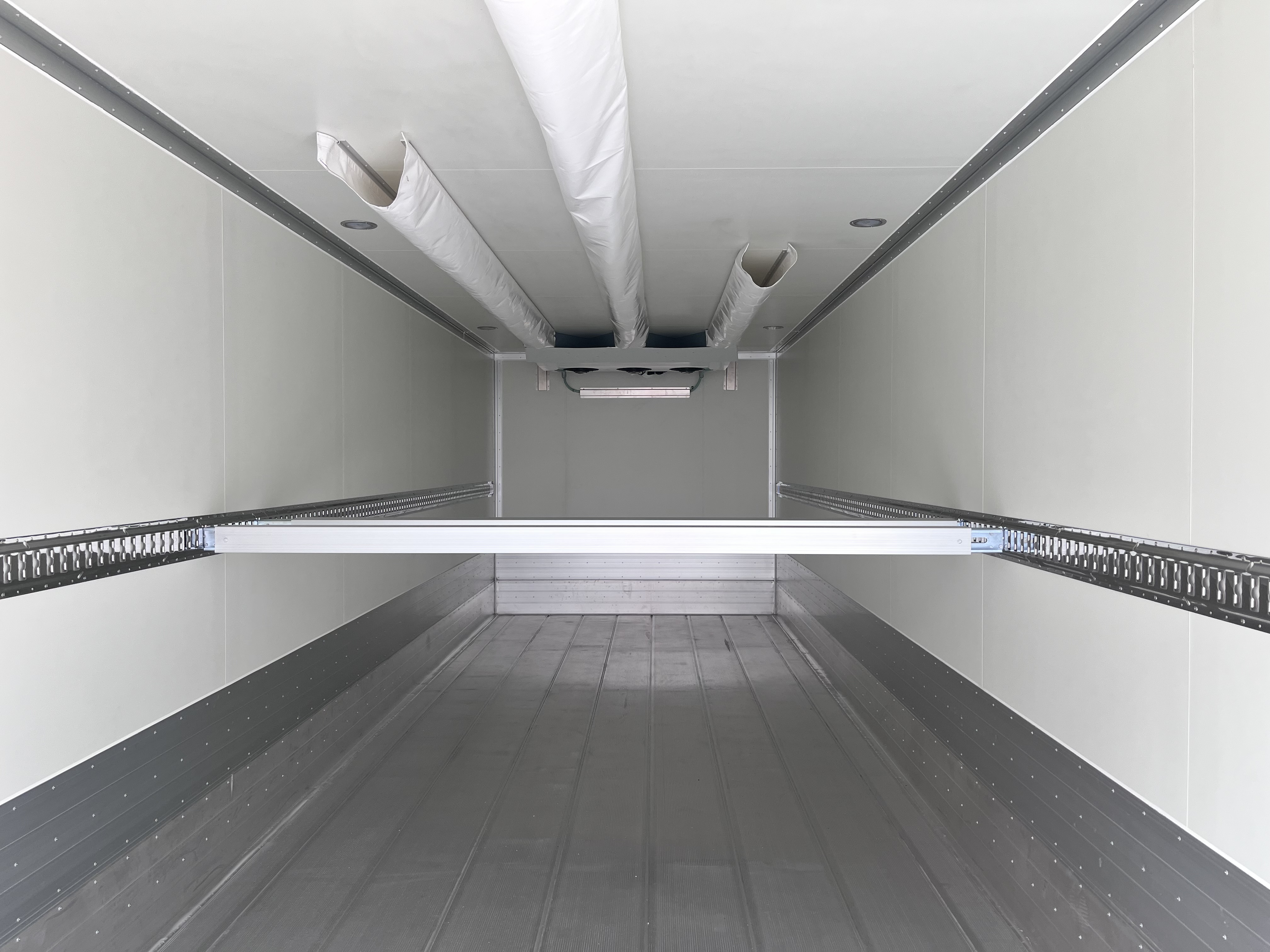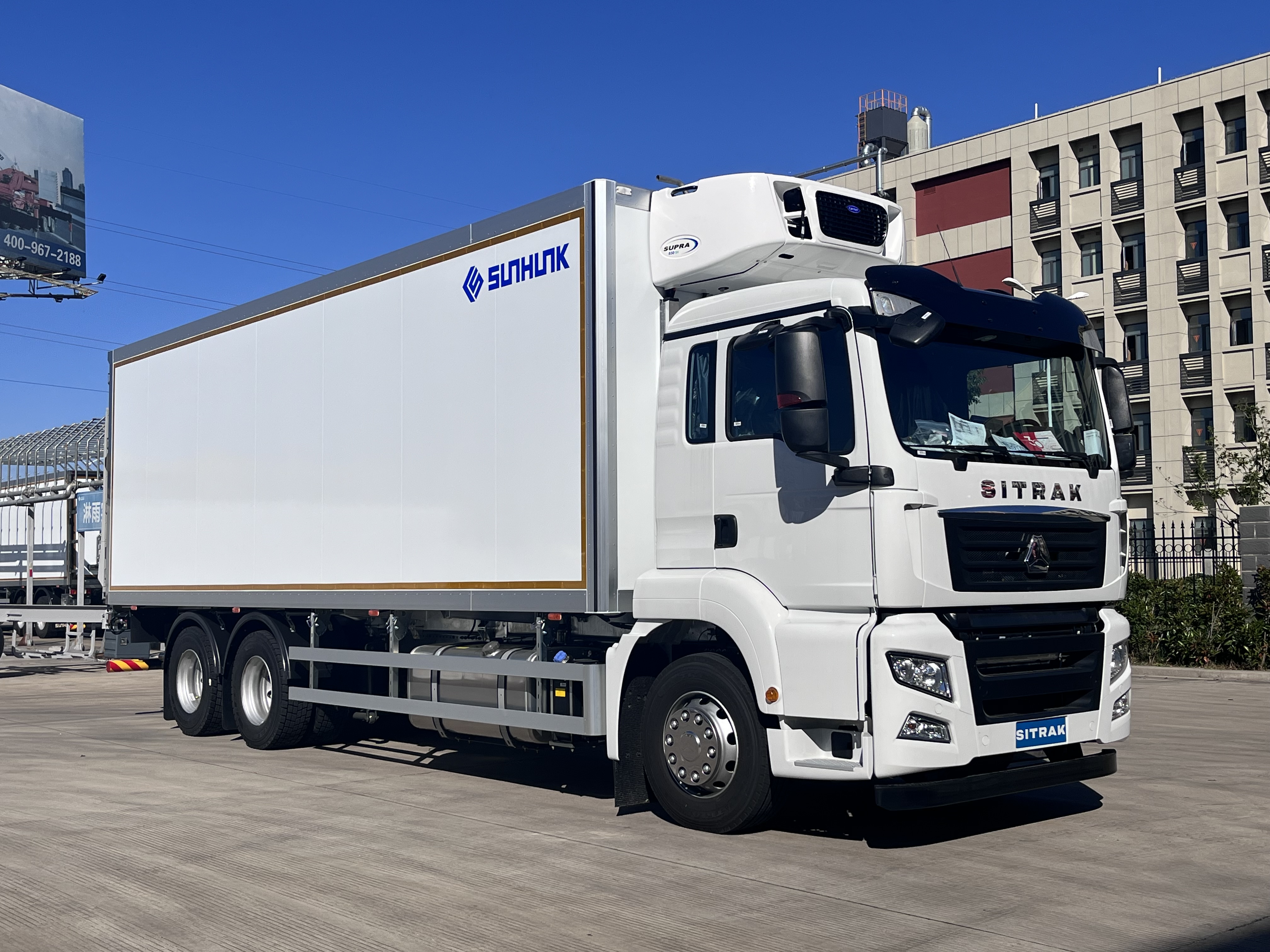- PRODUCTS
- SOLUTION
- SERVICE
- NEWS
- ABOUT US
Small refrigerated trailers are usually no longer than 20 feet, suitable for rapid urban deliveries, and save 20% in energy; large trailers reach up to 53 feet, suitable for long-distance transport, can carry up to 45,000 pounds, and reduce transportation costs by 15% to 25% per trip.
Small refrigerated trailers usually do not exceed 20 feet in length, suitable for rapid distribution in urban and suburban areas, while large refrigerated trailers can reach up to 53 feet, more suitable for large-scale and long-distance freight. For small refrigerated trailers, their flexibility in urban environments is particularly prominent. When making short-distance deliveries within the city, small trailers can achieve a delivery efficiency 30% higher than that of large trailers. In terms of energy consumption, small trailers usually save 20% more energy than large trailers, an advantage that stems from their lower load requirements and shorter transportation distances.

Taking a transport of agricultural products from California to New York as an example, a 40-foot large trailer can load an amount of goods equivalent to three small trailers in one go. This scale of transport capability significantly reduces the transportation cost per unit of product, and this scale effect can reduce transportation costs by 15% to 25%. In terms of maintenance costs, although the initial investment and repair costs of large refrigerated trailers are higher, their efficient carrying capacity and fewer journeys reduce the maintenance needs per distance. According to the latest industry data, the per kilometer maintenance cost of large refrigerated trailers is actually about 15% lower than that of small trailers. Urban traffic regulations have strict restrictions on vehicle size, especially in large cities in Europe and America, which restrict large vehicles from entering central city areas.
Feature | Small Refrigerated Trailers | Large Refrigerated Trailers |
Energy Efficiency | High efficiency, saves 20%-25% of electricity | High efficiency in long-distance transport |
Operational Scenarios | Suitable for short urban transport, frequent stops and starts | Suitable for long-distance transport, stable operation |
Energy Consumption Characteristics | Less cooling demand, lower energy consumption during startup and stopping | High energy consumption during startup and heating, energy efficiency optimized after stable operation |
Impact of Technological Advances on Energy Consumption | Uses efficient compressors and optimized insulation materials, energy efficiency increased by more than 15% | Also benefits from efficient equipment and technology, energy efficiency increased by more than 15% |
Energy Consumption per Ton of Cargo | Higher in urban delivery due to small batch frequent transport | Lower by 30% in long-distance transport due to high load capacity and optimized operation |
Potential for Strategic Improvement | Route optimization and scientific loading can further improve energy efficiency | Can also improve transportation efficiency through route optimization and effective loading |
Small refrigerated trailers, usually not exceeding 20 feet in length, show excellent maneuverability in narrow city centers or dense urban environments due to their smaller size and lighter weight. Small trailers can increase delivery efficiency by 40% in city centers compared to large trailers, thanks to their faster loading and unloading speeds and shorter turning radius. Small refrigerated trailers demonstrate high adaptability when market demands change rapidly. For businesses that need to deliver fresh products quickly, such as agricultural produce and seafood suppliers, small trailers can complete multiple delivery points within a few hours, while large trailers may take longer. Small trailers can save up to 25% of time on routine multi-point delivery tasks compared to large trailers.
In emergency situations, small refrigerated trailers are also more flexible in deployment. When a rapid response is required, such as in remote areas or unexpected demands, small trailers can be deployed within a few hours, which is crucial in disaster response and special circumstances. Although large refrigerated trailers are not as flexible as small ones in small-scale and high-frequency tasks, they show unique flexibility in handling large-scale cargo demands. In large-scale cross-state transport, a large trailer can transport an amount of cargo equivalent to three small trailers in one go. This method of transportation can save up to 15% of total costs per trip in long-distance transport.
The internal capacity of small refrigerated trailers typically ranges from 200 to 800 cubic feet, designed for rapid delivery tasks in cities and suburbs. A standard small refrigerated trailer can carry about 5,000 pounds of cargo. In the fast-moving consumer goods industry, small refrigerated trailers greatly enhance delivery efficiency and reduce time loss in transit due to their ability to quickly navigate through dense urban areas. Using small refrigerated trailers for routine deliveries can shorten total delivery time by 20% to 30%, and due to frequent loading and unloading operations, the design of this type of trailer also focuses more on quick access and efficient operation.
The internal capacity of large refrigerated trailers ranges from 2,500 to 4,000 cubic feet, capable of carrying weights up to 45,000 pounds. In the agricultural industry, large refrigerated trailers can transport thousands of pounds of agricultural products in one go from farms in the Midwest directly to markets on the East Coast. A large refrigerated trailer can save up to 15% of transportation and labor costs in one transport cycle, particularly during holidays and peak periods when there is a high demand for large-scale delivery.

With technological advancements, the design of refrigerated trailers is continually optimized to improve space utilization and transport safety. Modern refrigerated trailers use efficient insulation materials and smart temperature control systems, ensuring that even the most sensitive goods are transported under optimal temperature conditions, thereby extending the shelf life of goods and reducing losses due to temperature anomalies.